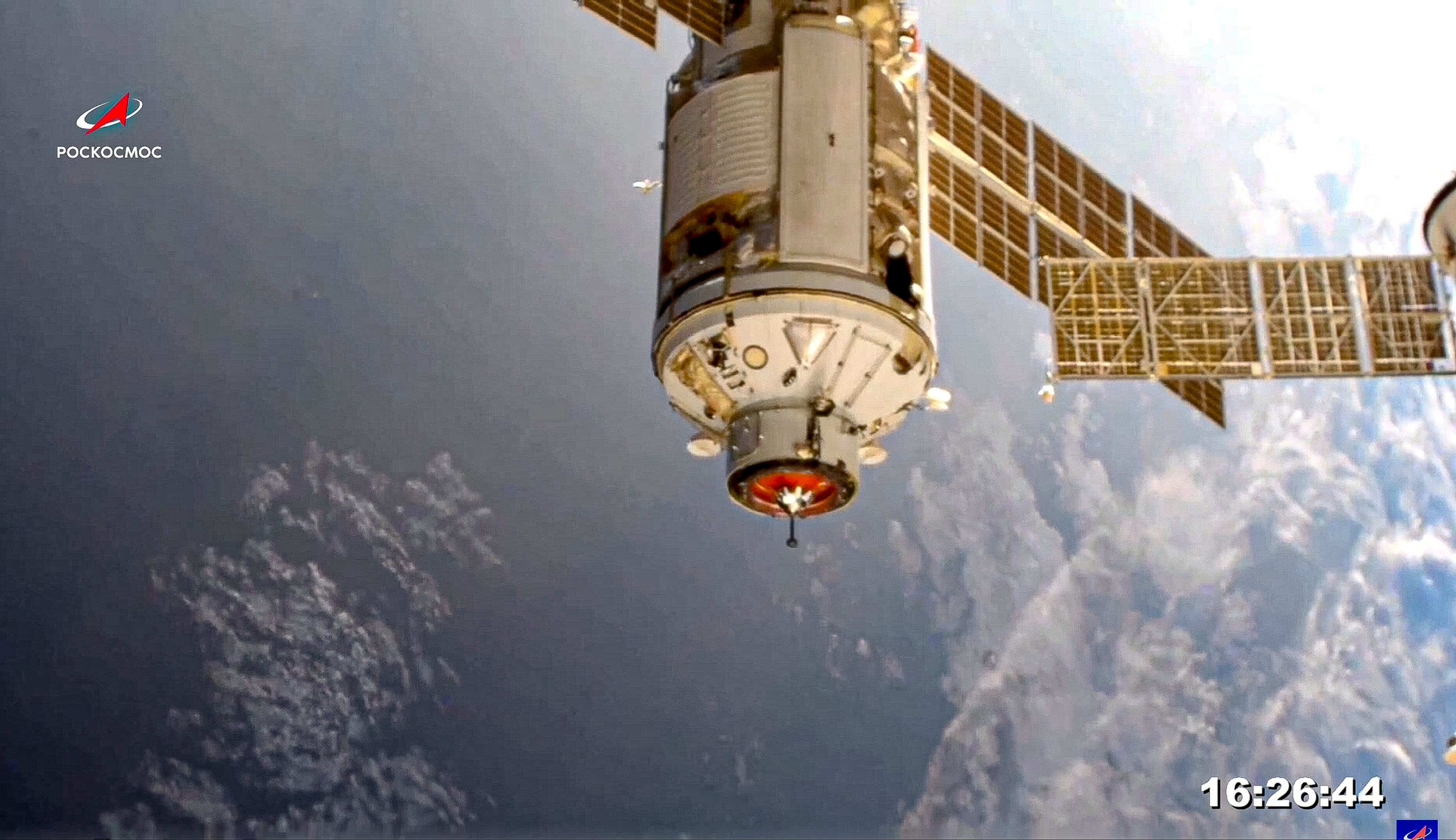Russia’s ‘walking arm’ robot successfully docks with International Space Station after eight days in space
Russian astronauts performed two spacewalks to prepare for the robot’s arrival

Russia's long-delayed lab module successfully docked with the International Space Station on Thursday, eight days after it was launched from the Russian space launch facility in Baikonur, Kazakhstan.
The 20-metric-ton (22-ton) Nauka module, also called the Multipurpose Laboratory Module, docked with the orbiting outpost in an automatic mode after a long journey and a series of manoeuvres. Russia's space agency, Roscosmos, confirmed the module's contact with the International Space Station at 13:29 GMT.
It carried with it the European Robotic Arm (ERA) payload, which can handle components up to 8000 kilograms and transport astronauts.
The launch of Nauka, which is intended to provide more room for scientific experiments and space for the crew, had been repeatedly delayed because of technical problems. It was initially scheduled to go up in 2007.
In 2013, experts found contamination in its fuel system, resulting in a long and costly replacement. Other Nauka systems also underwent modernization or repairs.
Nauka became the first new module in the Russian segment of the station since 2010. On Monday, one of the older Russian modules, the Pirs spacewalking compartment, undocked from the Space Station to free up room for the new module.
“We are giving the Space Station a mid-life upgrade after 20 years in orbit through our Columbus 2030 programme – an opportunity to modernise space with a commercial approach”, ESA Director of Human and Robotic Exploration David Parker said.
Russian crewmembers on the station have done two spacewalks to connect cables in preparation for Nauka's arrival. After docking, Nauka will require many manoeuvres, including up to 11 spacewalks beginning in early September, to prepare it for operation.
The International Space Station is currently operated by Nasa astronauts Mark Vande Hei, Shane Kimbrough and Megan McArthur; Oleg Novitsky and Pyotr Dubrov of Russia's Roscosmos space corporation; Japan Aerospace Exploration Agency astronaut Akihiko Hoshide and European Space Agency astronaut Thomas Pesquet.
In 1998, Russia launched the station's first module, Zarya, which was followed in 2000 by another big module, Zvezda, and three smaller modules in the following years. The last of them, Rassvet, arrived at the station in 2010.
Over its first year on the Space Station, the ERA’s main tasks in orbit are to install a large radiator and set up the airlock for Nauka.
Additional reporting by Associated Press
Join our commenting forum
Join thought-provoking conversations, follow other Independent readers and see their replies
Comments